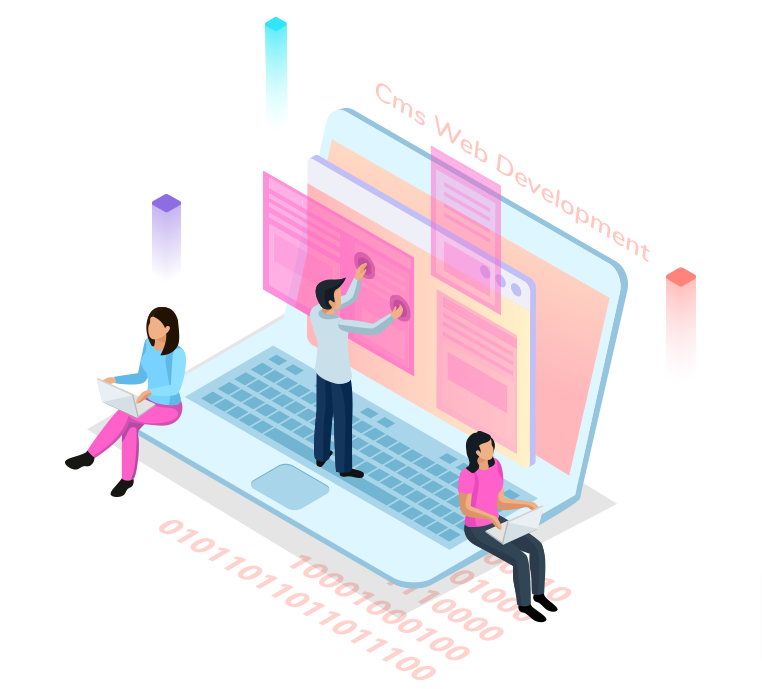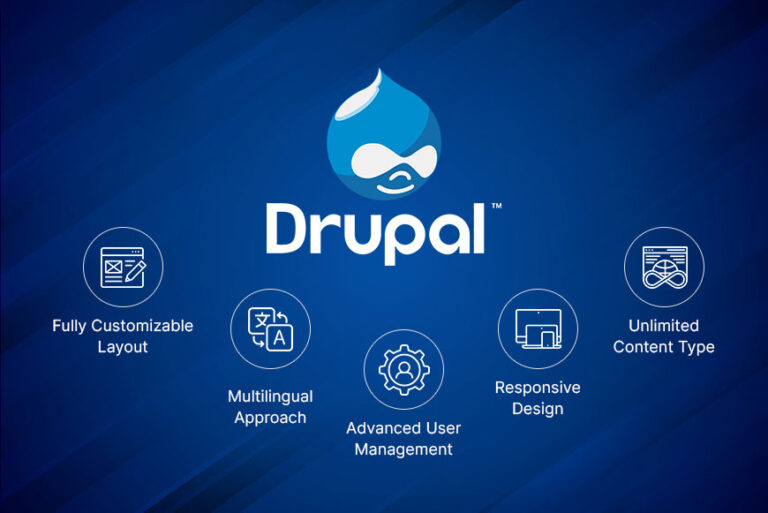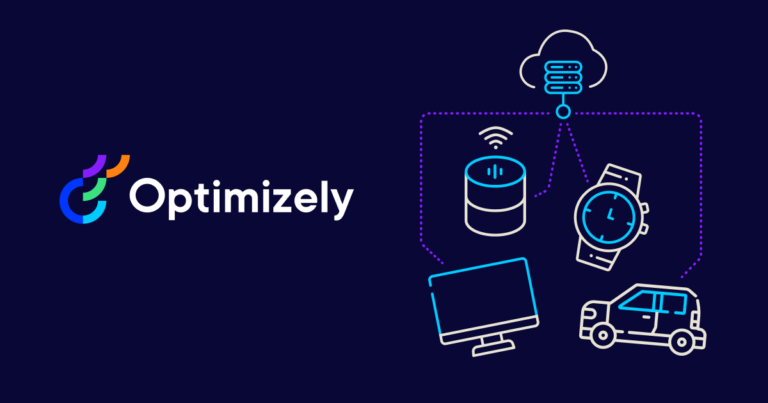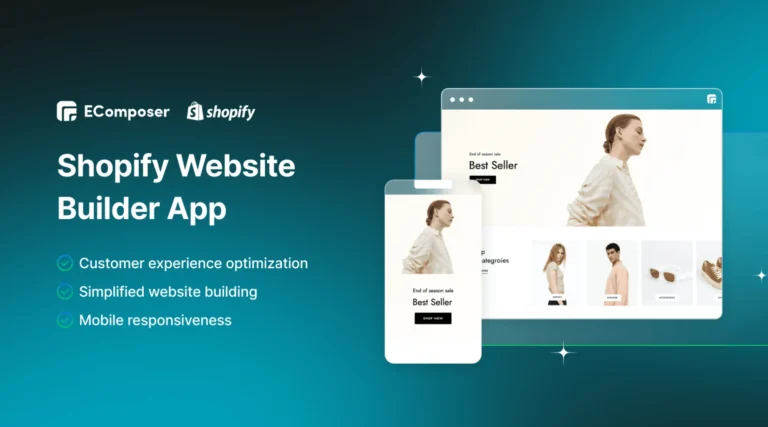Content Management System (CMS)
A content management system (CMS) is an application, that is used to manage content, permitting multiple contributors to produce, edit and publish. Content in a CMS is typically stored in a database and displayed in a presentation layer based on a set of templates like a website.
One major benefit of a CMS is its cooperative nature. Multiple editors can contribute, schedule, or manage content to be published. Because the user interface is usually browser-based, a CMS can be accessed from anywhere by any number of users.
While there are hundreds of CMS platforms each with its own unique functionality, some of the best and most popular CMS providers are:
1.Wordpress
2.Drupal
3.Optimizely CMS
4.Contentful
5.WIX
6.Shopify
7.Squarespace

1. WordPress
WordPress is a popular open-source cms web development system that powers over one-third of all websites on the internet. It’s known for its versatility and community-driven nature. WordPress is a powerful and versatile content management system (CMS) that enables users to create, manage, and publish websites with ease. Launched in 2003, it has grown to power over 40% of all websites on the internet. Known for its user-friendly interface, extensive customization options, and a vibrant community.
WordPress allows users to build everything from simple blogs to complex e-commerce sites. With thousands of themes and plugins available, it supports a wide range of functionalities, making it suitable for individuals, small businesses, and large enterprises alike. Its open-source nature ensures continuous improvement and innovation, making WordPress a popular choice for website creation globally.
Pros:
– 🛠️ User-Friendly : Easy to set up and manage, even for beginners.
– 🌍 Extensibility : Thousands of themes and plugins available to customize functionality.
– 🤝 Community Support : A vast community offers resources, forums, and documentation.
Cons:
– 🔒 Security Vulnerabilities : Can be prone to attacks if not properly managed.
– 🐢 Performance: May slow down with too many plugins or poor hosting.
– 🔄 Maintenance : Regular updates are necessary for security and performance.

2. Drupal
Drupal is a powerful open-source CMS known for its flexibility and powerful organizational capabilities. It’s particularly favored for large and complex websites. Drupal is a robust and flexible open-source content management system (CMS) that enables users to create and manage complex websites and applications. Launched in 2001, it is particularly known for its scalability and powerful customization capabilities, making it ideal for enterprise-level solutions and large content-rich sites.
Drupal offers a modular architecture, allowing developers to extend its functionality through a wide range of modules and themes. Its strong focus on security and user management makes it a popular choice for government, education, and large non-profit organizations. With a dedicated community of developers and users, Drupal consistently evolves to meet sophisticated web requirements and digital experiences.
Props:
– 🔐 Security : Recognized for strong security features.
– 👥 User Management : Excellent for websites that require multiple user roles with complex permissions.
Cons:
– 📈 Steeper Learning Curve : More advanced than other CMS, which can be daunting for beginners.
– 👨💻 Development Resources Required : Typically needs a developer for setup and customization.
– 📉 Limited Themes : Fewer out-of-the-box themes than WordPress.

3. Optimizely CMS
Optimizely CMS is a cloud-based digital experience platform offering tools for enterprise-level content management, focusing on personalization and marketing. Optimizely CMS, formerly known as Episerver, is a versatile content management system designed to enhance digital experiences through personalization and experimentation. Focused on providing marketers and developers with powerful tools, it enables easy content creation, management, and optimization across various digital channels.
Optimizely CMS offers robust features such as multi-site management, responsive content delivery, and integrated A/B testing capabilities, allowing organizations to tailor their websites to meet user needs effectively. With a strong emphasis on data-driven decision-making, it is widely used by businesses looking to enhance customer engagement and drive conversions in a competitive online landscape.
Pros:
– 🎯 Personalization : Advanced tools for creating tailored user experiences.
– 🔄 Integration : Works well with various marketing and business tools.
– 📈 Scalability : Suited for businesses that plan to grow.
Cons:
– 💵 Cost-Effective : Can be expensive for businesses on a budget.
– ⚙️ Complexity : Sometimes requires specialized training and support to use effectively.
– 🔄 Customization Limits : More rigid compared to fully open-source solutions.

4. Contentful
Contentful is a headless CMS that allows for flexibility and scalability in content delivery across multiple platforms. It utilizes APIs for content management. Contentful is a flexible, API-first content management platform that empowers developers and marketers to create and manage content-rich websites effortlessly. With its headless architecture, Contentful decouples content creation from presentation, allowing users to deliver consistent digital experiences across various channels, including web, mobile, and IoT.
The intuitive interface facilitates collaboration among teams, while powerful content modeling tools enable customization for unique project needs. Ideal for businesses seeking scalability and agility, Contentful integrates seamlessly with other tools and services, streamlining workflows and enhancing the overall efficiency of website development and management.
Pros:
– 🔗 API-Driven : Content can be accessed anywhere, allowing for flexible delivery.
– 📊 Scalable : Great for complex applications that require diverse content types.
– 🆘 Separation of Content and Presentation : Editors and developers can work independently.
Cons:
– 👩💻 Technical Requirement : Requires developer skills to set up effectively.
– 💰 Pricing : Can vary significantly based on usage; may get costly.
– ✖️ Less Out-of-the-Box Functionality : More complex setup compared to traditional CMS platforms.

5. Wix
Wix is a user-friendly cloud-based website builder that employs a drag-and-drop interface, making it simple for anyone to create a professional-looking website. Wix is a user-friendly website builder that enables individuals and businesses to create stunning websites without any coding knowledge. Featuring a drag-and-drop interface, Wix offers a wide range of customizable templates and design elements, making it easy to create a unique online presence.
Users can enhance their sites with built-in tools for SEO, e-commerce, and blogging, as well as access a library of apps and features through the Wix App Market. Ideal for small businesses, creatives, and entrepreneurs, Wix provides a seamless and efficient solution for building and managing websites, all backed by reliable hosting and support.
Pros:
– ✨ Ease of Use : Very intuitive for non-technical users.
– 🎨 Templates : Offers a diverse range of templates to choose from.
– ⚙️ Integrated Features : Comprehensive tools for SEO, analytics, and e-commerce.
Cons:
– 🚫 Limited Flexibility : Customization options can be restrictive.
– 🔍 SEO Limitations : More difficult to optimize for advanced SEO.
– 🔒 Hosting Lock-In : Websites are hosted on Wix’s servers, which can complicate migration.

6. Shopify
Shopify is an e-commerce platform designed for businesses of all sizes to create online stores effectively with tools for inventory management and sales. Shopify is a robust e-commerce platform designed to help businesses of all sizes create and manage online stores. With its user-friendly interface, Shopify allows users to easily set up their storefronts, customize designs, and manage inventory without any technical expertise.
The platform offers a wide range of tools and features, including payment processing, shipping solutions, and marketing tools, enabling businesses to sell products across multiple channels, including their websites, social media, and marketplaces. With scalability and a vast array of apps in the Shopify App Store, it empowers entrepreneurs and retailers to grow their brands and streamline their operations efficiently.
Pros:
– 🛒 E-Commerce Focused : Tailored specifically for online selling, ideal for retailers.
– 👌 Ease of Use : User-friendly setup and management for non-developers.
– 📱 Robust App Marketplace : Offers a variety of apps to improve functionality.
Cons:
– 💳 Costly : Monthly fees and potential transaction costs can accumulate.
– ❌ Limited Customization : Less flexible in design customization compared to open-source platforms.
– 📜 Content Management Limitations : Primarily focused on e-commerce, less effective for broader content needs.

7. Squarespace
Squarespace is a website building and hosting platform that provides a comprehensive set of tools for creating visually appealing websites. It is particularly popular with creatives and small businesses. Squarespace is an all-in-one website building and hosting platform known for its elegant, designer-quality templates and user-friendly interface. Ideal for creatives, small businesses, and individuals.
Squarespace enables users to easily create visually stunning websites, blogs, or online stores without needing coding skills. Its integrated features include blogging tools, e-commerce capabilities, SEO optimization, and analytics, making it simple to manage and grow an online presence. With a focus on aesthetics and functionality, Squarespace provides everything needed to establish a professional website tailored to various needs.
Pros:
– 🎨 Design-Oriented Templates : Stunning templates that cater to various industries.
– 🌐 All-in-One Solution : Integrated hosting, e-commerce, domains, and analytics.
– ✏️ Drag-and-Drop Builder : Easy-to-use interface for users of all skill levels.
Cons:
– 📉 **Limited Third-Party Integrations : Fewer integrations compared to platforms like WordPress.
– 💵 **Pricing Tiers : Some features are only available at higher pricing tiers.
– 🔍 **SEO Limitations : Customization options for SEO are less robust than competitors.

CMS web development is a popular way to create and manage websites. A CMS is a software application that allows users to create, edit, and publish digital content. CMS web involves using a CMS to create and manage a website. This process can be done by anyone with basic computer skills, and it eliminates the need for coding knowledge.
CMS web development has many advantages over traditional web development methods. It is easier and quicker to build a website using a CMS than it is to build one from scratch. The CMS provides pre-designed templates and themes that can be customized to fit the needs of the website. This allows developers to focus on the content of the website rather than the design.
One of the most popular CMS platforms is WordPress. WordPress is an open-source content management system that is used by millions of websites worldwide. It is easy to establish, operate, and customize. WordPress has thousands of plugins and themes that allow developers to add new functionality and change the look and feel of the website.
Another popular CMS web development platform is Drupal. Drupal is also an open-source content management system that is used by many websites. It is known for its scalability and safety features. Drupal is a more complex platform than WordPress, but it is more flexible and customizable.
Joomla is another popular CMS web Development platform. It is a free, open-source content management system that is used by many websites. Joomla is known for its ease of use and its ability to create complex websites. Joomla has a large community of developers and users who create new extensions and templates for the platform.
There are many other CMS web development platforms available, including Magento, Shopify, and Squarespace. Each platform has its own strengths and weaknesses, and the choice of platform depends on the needs of the website.
As mentioned earlier, CMS web development offers many benefits. Let’s take a closer watch at some of them.
Ease of Use
One of the biggest advantages of CMS web development is its ease of use. CMS platforms provide pre-designed templates and themes that can be customized without any coding knowledge. This permits even beginners to build a website quickly and skillfully.
Collaboration
CMS web development also allows multiple users to collaborate on a website. Different users can be assigned different roles and permissions, making it easy to manage content and updates. This is particularly useful for businesses and organizations that need to update their website frequently.
Easy Content Updates
CMS platforms make it easy to update the content of a website. Users can log in to the CMS and make changes without any coding knowledge. This allows for quick and easy updates, which is important for keeping the website up-to-date and relevant.
SEO
Most CMS platforms have built-in SEO features, making it easy to optimize the website for search engines. This includes customizable URLs, meta tags, and sitemaps. These features help attract organic traffic to the website, which is important for businesses and organizations that rely on their website for customer acquisition.
Flexibility
CMS platforms offer a lot of flexibility in terms of design and functionality. There are thousands of plugins and themes available, which can be customized to fit the needs of the website. This makes it possible to create a unique and personalized website, even without coding knowledge.
Cost-effective
CMS web development is a cost-effective way to create a website. Many CMS platforms are open-source and free to use, and there are many free themes and plugins available. This makes it possible to create a website even on a tight budget.
Despite its many advantages, CMS web development does have some challenges. Let’s take a glance at some of them.
Security
Security is one of the biggest challenges of CMS web development. Because CMS platforms are widely used, they are a target for hackers. It is important to keep the CMS and its plugins up-to-date to ensure that security vulnerabilities are patched. It is also important to use strong passwords and limit access to the CMS to trusted users.
Customization
While CMS platforms offer a lot of flexibility, there are limits to what can be customized without coding knowledge. If a website requires complex functionality or a unique design, it may be necessary to hire a developer to create custom code. This can be expensive and time-consuming.
Performance
CMS platforms can sometimes be slower than custom-built websites, especially if the website has a lot of plugins or customizations. This can impact the user experience and can affect search engine rankings.
When starting a CMS development project, there are a few key steps to follow to ensure its success:
Define your goals and requirements
Before starting any web development project, it’s important to define your goals and requirements. What do you desire to achieve with your website? What features and functionality do you need? Who is your target audience? By defining these factors upfront, you can ensure that your website meets your needs and is effective in achieving your goals.
Choose the right CMS platform
As mentioned earlier, there are many CMS web development platforms to choose from. When choosing a platform, consider your technical expertise, the needs of your website, and the level of customization and functionality required. Explore each platform and select the one that best fits your requirements.
Choose the right hosting provider
Choosing the right hosting provider is also important for the success of your website. Look for a provider that offers good performance, security, and support. Consider the level of traffic your website will receive and choose a hosting plan that can handle that traffic.
Customize the design and functionality
Once you’ve chosen your CMS web development and hosting provider, it’s time to customize the design and functionality of your website. Choose a theme or template that fits your brand and customize it as needed. Add the necessary plugins and functionality to meet your requirements.
Test and launch
Before launching your website, it is very important to test it entirely. Make sure that all functionality works as expected and that the website is optimized for performance and search engines. Once you’re satisfied with the website, launch it and start promoting it to your target audience.
Maintain and update
Maintaining and updating your website is important for its long-term success. Regularly update the CMS and its plugins to ensure security and performance. Keep your content up-to-date and relevant, and make any necessary changes to the design and functionality as your needs evolve.
CMS web development also allows for easy search engine optimization (SEO). Most CMS platforms have built-in SEO features, such as customizable URLs, meta tags, and sitemaps. This makes it easy to optimize the website for search engines, which is important for attracting organic traffic.
Discover the power of CMS in web development! With CMS, you can create and manage your website effortlessly. No coding skills needed, just easy collaboration and built-in features. Enjoy access for multiple users, content scheduling, and instant updates. Elevate your web development game with CMS today!
In conclusion, CMS web development is a popular way to create and manage websites. It offers many benefits, including ease of use, collaboration, easy content updates, and SEO. However, it also has its challenges, such as security and customization. The choice of CMS platform depends on the needs of the website, and it is important to keep the CMS up-to-date and secure.